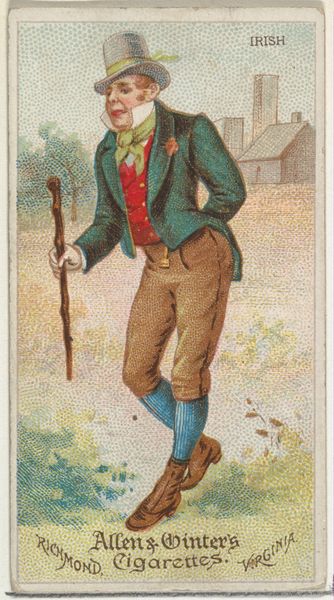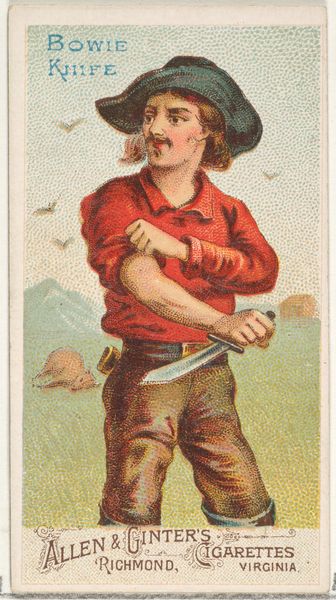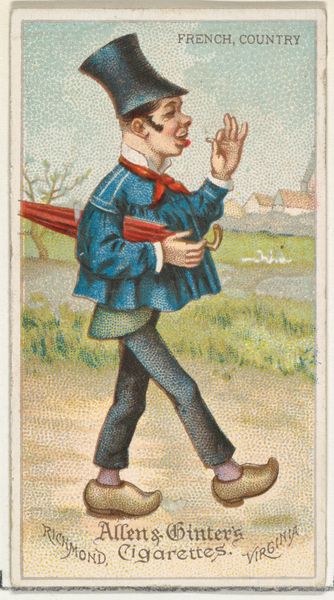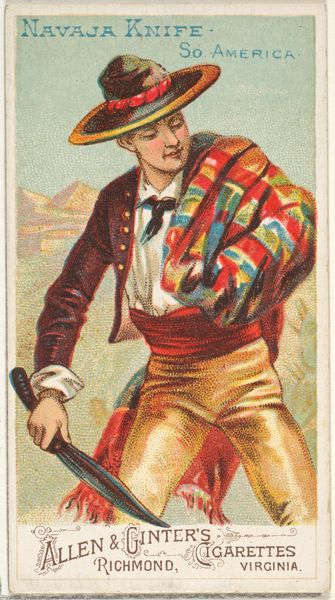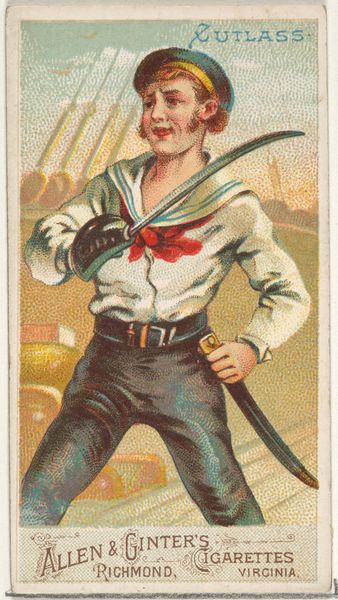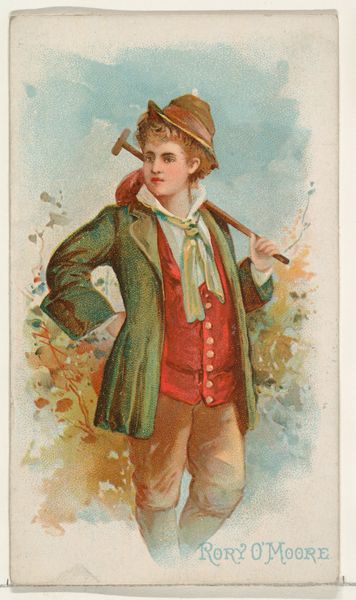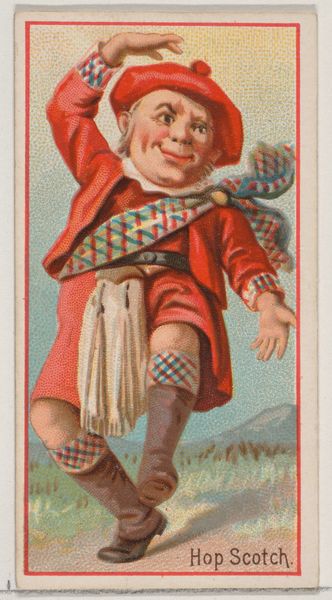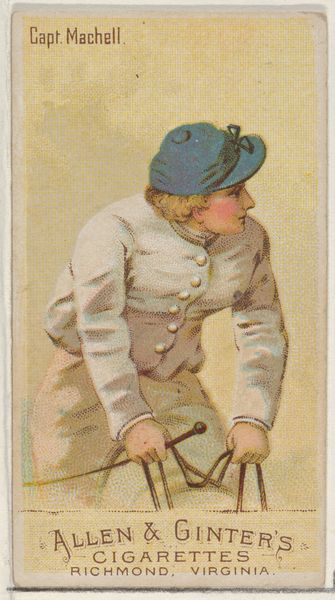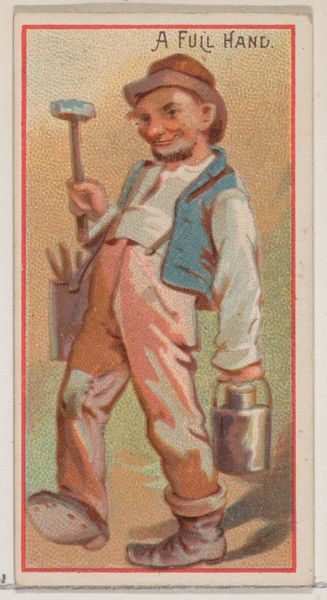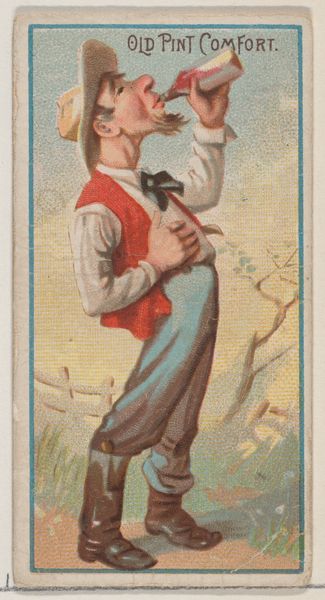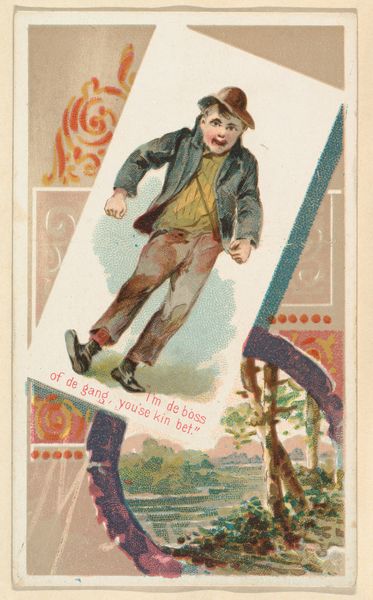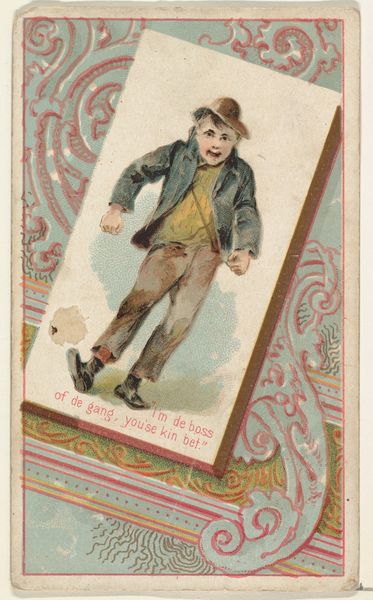
Shillalah, from the Arms of All Nations series (N3) for Allen & Ginter Cigarettes Brands 1887
0:00
0:00
Dimensions: Sheet: 2 3/4 x 1 1/2 in. (7 x 3.8 cm)
Copyright: Public Domain
Curator: This diminutive color print, dating to 1887, is titled "Shillalah," and it comes from the "Arms of All Nations" series of collectible cards produced by Allen & Ginter Cigarettes. Editor: My first thought is, 'Ouch!' The image, though small, presents this fellow with a very forceful, raised weapon. The color is unexpectedly vibrant and, perhaps, a bit comical. It does draw the eye with an almost mischievous appeal. Curator: Yes, it’s interesting to consider the layers of production inherent in something like this. From the cultivation of tobacco, the industrial processes of cigarette manufacture, to the commissioned artwork and printing technologies. This all to then arrive to the act of consumption, use, and ultimate discarding—or, rarely, preservation, as we see here. Editor: Absolutely! It's that layering that piques my interest. Beyond being an advertisement, the shillelagh itself carries the weight of Irish symbolism. Think of it representing folk traditions and, perhaps, a bit of rebellious spirit—especially considering the British context of the time. Curator: Right. And we must remember that Allen & Ginter targeted middle-class consumers with these cards, promoting notions of global awareness but, simultaneously, reflecting contemporary orientalist and even caricatured views of other cultures. Note the very 'stage Irish' presentation of the man, with what can be considered outdated clothing. Editor: And his stance! One foot slightly forward, hand on his hip—almost daring. The shillelagh, for the Irish, functioned as a walking stick, defense, and also something of a statement. To see it positioned so boldly above his head certainly evokes a sense of cultural pride, perhaps even resistance. The very notion that it is 'Shillalah' instead of 'Shillelagh', as named on the print, is telling of that misunderstanding and appropriation. Curator: Precisely. These trade cards are fascinating microcosms. On the one hand, disposable advertisements tied to commerce and pleasure. On the other, artifacts embedding ideas about nationality, class, and even artistic expression. Editor: Looking closer, I realize how such seemingly simple commercial art holds deeper resonance. A symbol of resilience wrapped within an ad. Fascinating. Curator: Agreed, considering this particular artifact certainly reveals how material objects become embedded in broader networks of production and even cultural expression, carrying far more symbolic weight than their makers perhaps even anticipated.
Comments
No comments
Be the first to comment and join the conversation on the ultimate creative platform.
